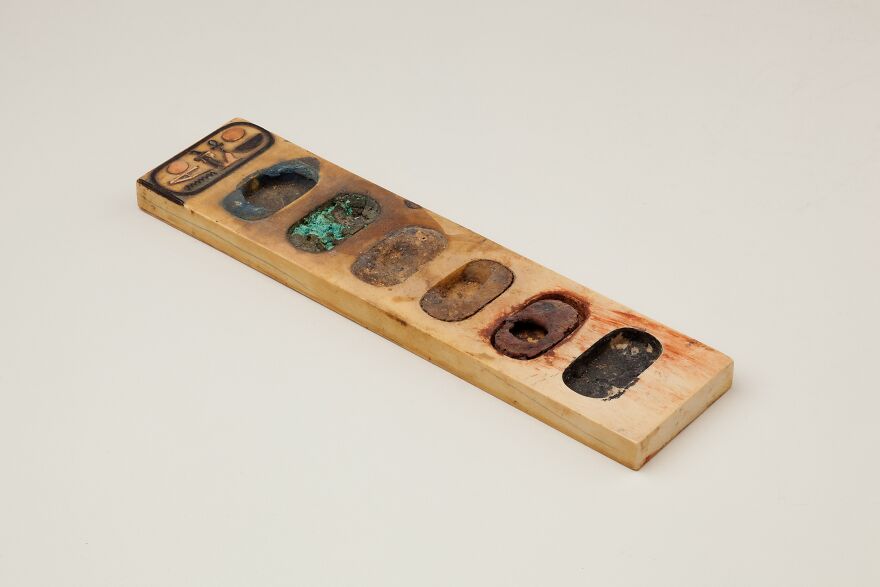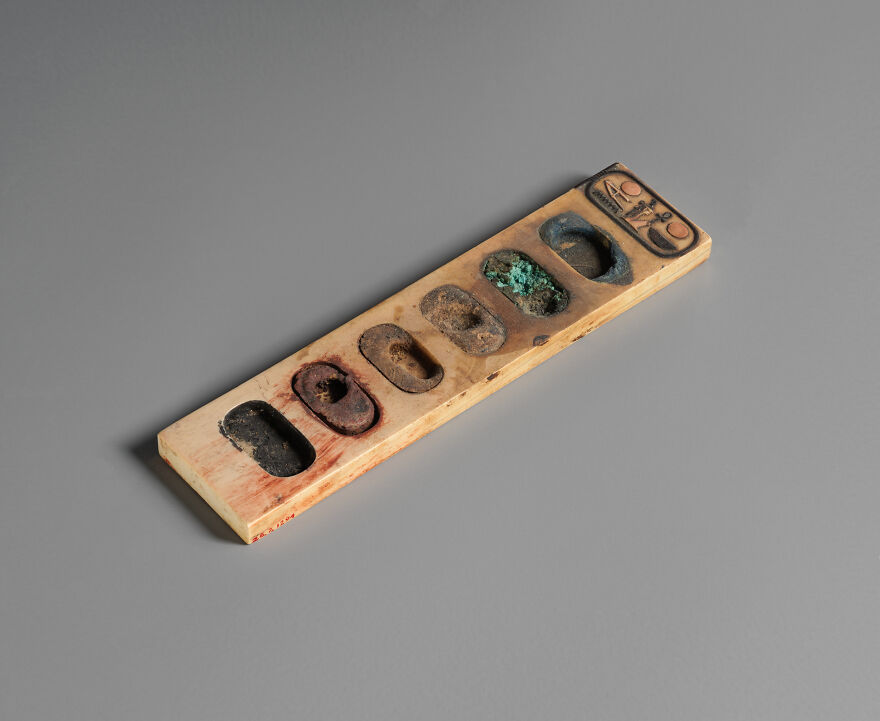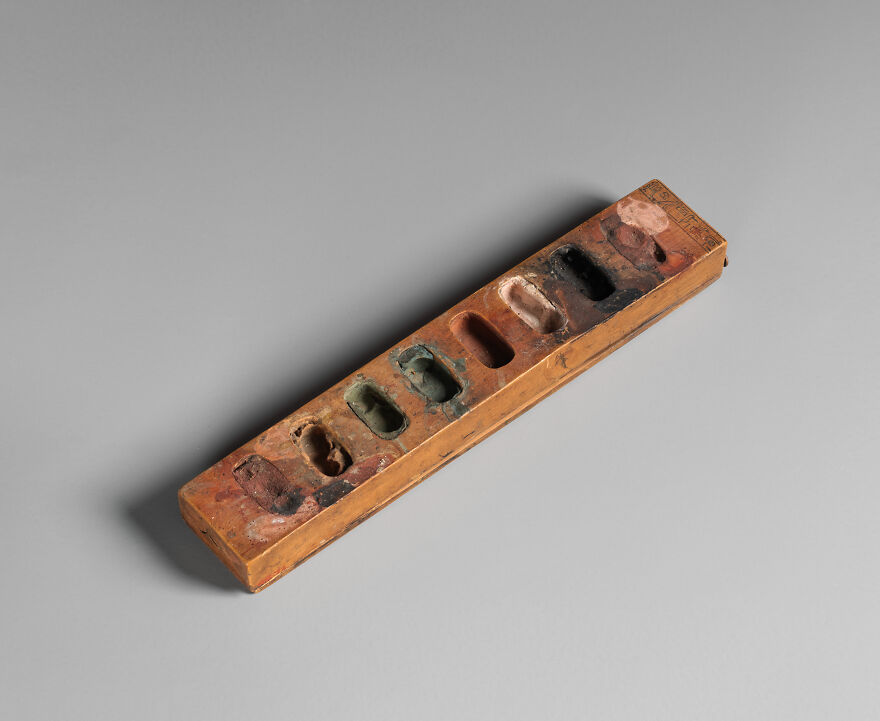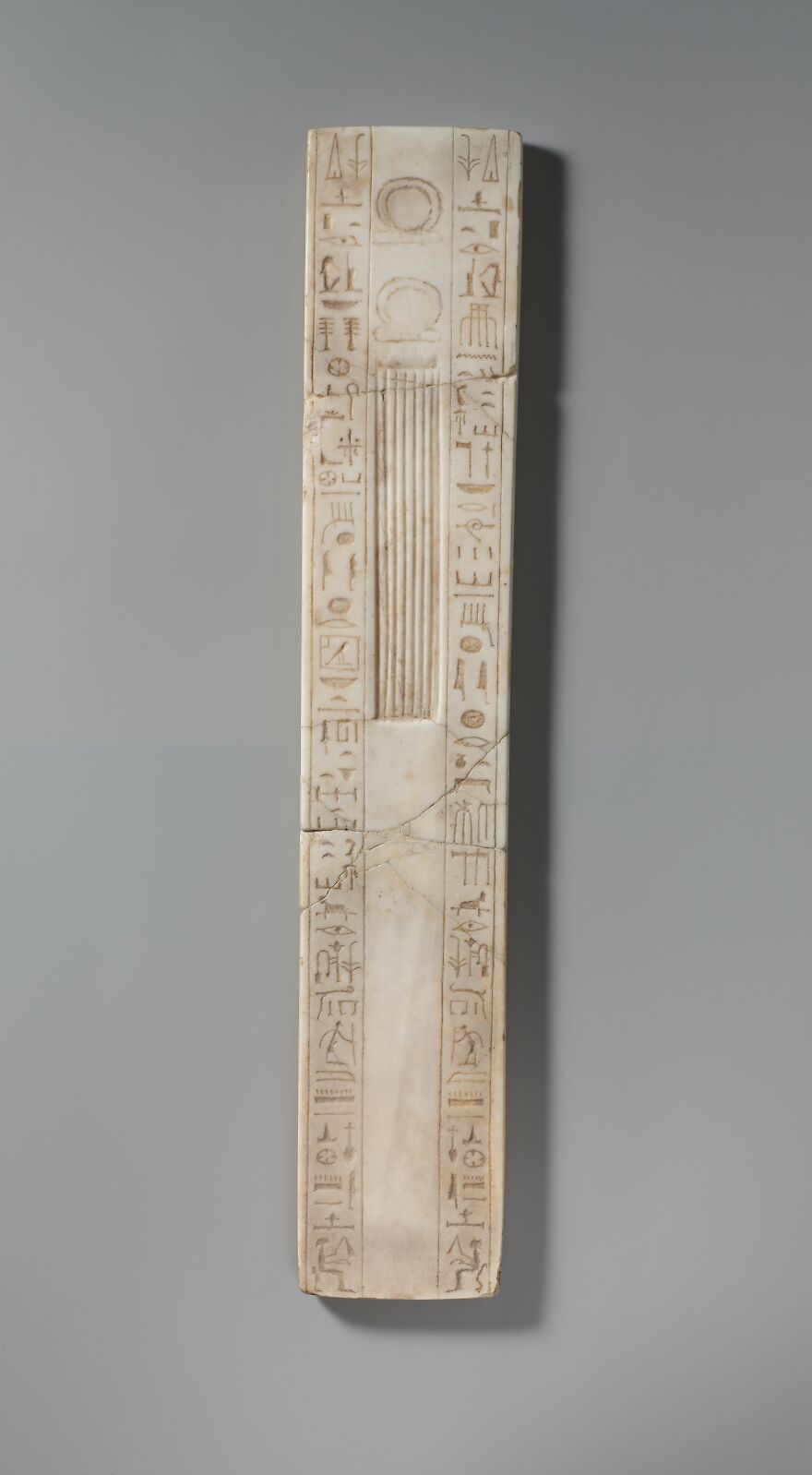Ancient cultures will probably always remain fascinating. There’s something wonderful about seeing the roots of our society: the first wheel, crooked pottery, or even cracked stained glass. As we delve into the stories that these items represent, we can form a greater understanding of what it was like to live in those times.
Of course, history is not always about who invented what—often we can find bits and pieces of the lives that, in many ways, echo our own. And that’s where museums and collections step in, to let us grasp the intricacies of the past and maybe even take inspiration from it. And that’s exactly what an old palette from Ancient Egypt, safely kept at The Met, allows us to do—reaffirm our belief that art, in all its forms, is as old as time, and just as appreciated.
This palette is inscribed with the name of Amenhotep III

Image credits: The Metropolitan Museum of Art
The Met museum has an extraordinary item in its collection—an ivory palette that came all the way from 1390–1352 B.C. The palette itself was made from a single piece of ivory, with six wells that used to contain coloring the artist used. While the general usage can only be assumed, the palette has an inscription of the ruler at the time, Amenhotep III, and an epithet saying “beloved of Re.”
The palette wells still contain traces of pigments

Image credits: The Metropolitan Museum of Art
The palette in question still has traces of color in it: blue, green, yellow, red, black, and what could possibly be brown. The finding was first acquired by Lord Carnarvon in 1923, and then acquired by the museum in 1926.
It is more than 3,000 years old, dated as 1390–1352 B.C.

Image credits: The Metropolitan Museum of Art
The palette is an old one, coming all the way from the New Kingdom period. It was likely used in Upper Egypt during the reign of a ruler who appreciated the arts. Amenhotep III, also known as the Magnificent, belonged to the Eighteenth dynasty and he brought about a prosperous period to Egypt, giving importance to artistic expression.
A painting palette of Vizier Amenemopet from the Eighteenth dynasty is also in The Met

Image credits: The Metropolitan Museum of Art
The museum also has another similar palette in their possession, but it’s a bit less preserved. The painting palette of Vizier Amenemopet is dated to be from 1427–1400 B.C. and can be attributed to the reign of Amenhotep II. Only this one is made from wood, not ivory, so it’s likely the user of the palette was less wealthy.
Not all palettes were used for painting, as this scribe’s palette from the same Eighteenth dynasty proves

Image credits: The Metropolitan Museum of Art
Palettes weren’t used by painters alone. During the Eighteenth dynasty, all artistic expressions were appreciated, writing included. Of course, this aspect leans towards more official sectors, but still—good handwriting can go a long way in the diplomatic world! This model of a scribe’s palette is inscribed for the royal scribe and chief steward in Memphis, Amenhotep. It is dated to the reign of Amenhotep III, much like the first palette, only this one was obviously used for writing.
The internet is fascinated by the artist’s inscribed palette that retains some of its paint















The post This 3,400-Year-Old Painting Palette With Remnants Of Pigments From Ancient Egypt Has Fascinated The Internet first appeared on Bored Panda.
from Bored Panda https://ift.tt/2KrqoUR
via IFTTT source site : boredpanda